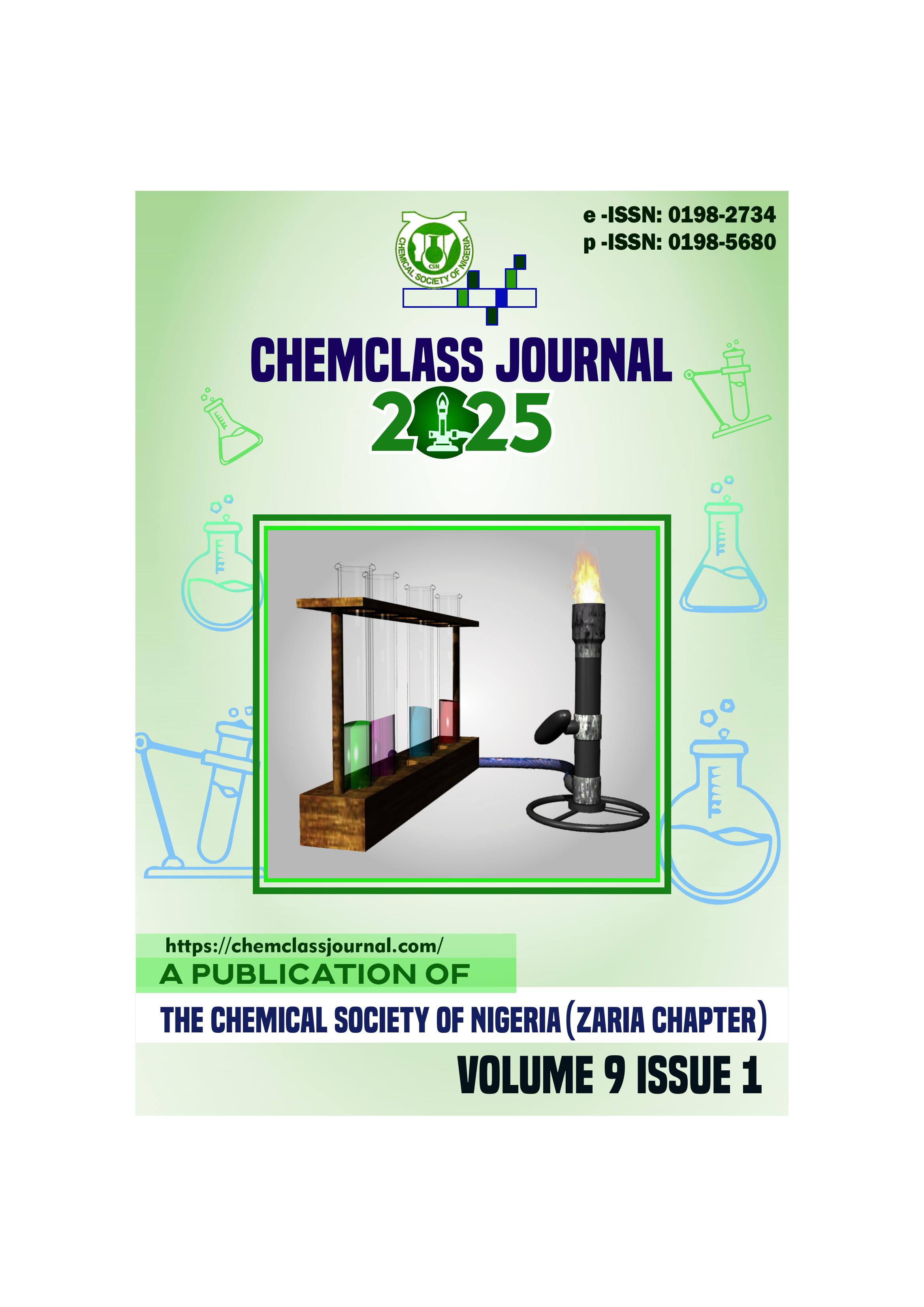Synthesis, Spectroscopic, Computational and Biological Studies of Ni(II) Mixed-Ligand Complex of (E)-1-((Phenylimino)Methyl)Naphthalen-2-ol
DOI:
https://doi.org/10.33003/Keywords:
Antibacterial , antioxidant , computational , Nickel(II) ion , Schiff baseAbstract
The Schiff base compound (E)-1-((phenylimino)methyl)naphthalen-2-ol and the mixed Ni(II) complex
were synthesized and characterized by elemental analysis, IR, UV-Vis, 1H and 13C NMR spectroscopies.
Computational calculations were also performed on the modelled and optimized structure of the Ni(II)
complex via Density functional theory (DFT) employing Becke’s three-parameter hybrid functional with
the Lee-Yang-Parr correlation functional (B3LYP) and the Empirical Density Functional 1 methods (EDF1)
with 6-31G** basis set. The IR, UV-Vis, 1H and 13C NMR spectra of the Ni(II) complex were calculated
and the results compared with the corresponding experimental spectra to improve the experimental
structural elucidation. The 1H NMR spectrum revealed that the Schiff base coordinated to the Ni(II) ion
through the deprotonated phenolic oxygen and azomethine nitrogen atoms. The comparison between the
calculated and experimental data provided a very good agreement which supported the proposed structure.
The antibacterial studies showed that the Ni(II) complex exhibited better inhibitory activities than the Schiff
base ligand





 ChemClass Journal
ChemClass Journal
